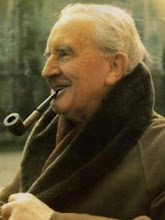
I go to both an ordinary and an extraordinary parish. It is ''ordinary'' in the sense that it is a real parish, with real families and friends who all know and pray for eachother. It is ''extraordinary'' in the sense that, unlike most parishes, we have regular Masses in the Old Rite. For many years before I became a parishoner, I was accustomed to going to Masses (most of them Low Masses) in odd churches dotted around various places, and at odd times (First and Second Fridays, Second Saturdays at such-and-such a time for example), where I didn't know anyone (save by sight) not even the Celebrant.
That sort of ''faith-on-the-run'' scenario has largely changed in the last two years (since the Motu Proprio Summorum Pontificum of the most Holy Father Pope Benedict XVI). Inspired by the ''liturgical reform'' being brought about by the Holy Father, orthodox priests and laity everywhere have taken heart and are turning back (albeit gradually) to the true and authentic worship of God in the Sacred Liturgy. So in a sense these ''odd churches'' and ''odd times'' were not entirely isolated, they just seemed to be. The triumph of orthodoxy is something that I never omit in my prayers. The title of this post was inspired by the ''house-church'' of St Gregory of Nazianzos at Constantinople. At a time when the Catholic faith was scoffed at (well it still is) by heretics, St Gregory established a small ''haven'' of orthodoxy in the Imperial city, which later became known as Anastasia, the place of the resurrection of the Faith. So too, churches that offer the Old Rite can be seen in this light, small havens of orthodoxy, scenes of the resurrection of the Faith.
I shall end this post with an extract from The Lord of the Rings that perfectly conveys my sentiments on this matter:
''Frodo sighed and was asleep almost before the words were spoken. Sam struggled with his own weariness, and he took Frodo's hand; and there he sat silent till deep night fell. Then at last, to keep himself awake, he crawled from the hiding-place and looked out. The land seemed full of creaking and cracking and sly noises, but there was no sound of voice or foot. Far above the Ephel Dúath in the West the night-sky was still dim and pale. There, peeping among the cloud-wrack above a dark tor high up in the mountains, Sam saw a white star twinkle for a while. The beauty of it smote his heart, as he looked out of the forsaken land, and hope returned to him. For like a shaft, clear and cold, the thought pierced him that in the end the Shadow was only a small and passing thing: there was light and high beauty for ever beyond its reach...He crawled back into the brambles and laid himself by Frodo's side, and putting away all fear he cast himself into a deep and untroubled sleep.'' (The Lord of the Rings, Book VI, Chapter II, The Land of Shadow)

Interesting stuff, Patricius.
ReplyDeleteWhere do your pictures come from?
Thanks for your interest leutgeb. The two pictures are by two well-known Tolkien artists called John Howe and Ted Nasmith. The one for this post depicts the scene from The Land of Shadow. The other one depicts the sack of Gondolin, which was the first of the Lost Tales to be composed.
ReplyDeleteA fascinating post - just goes to show one really can learn something new every day!
ReplyDelete